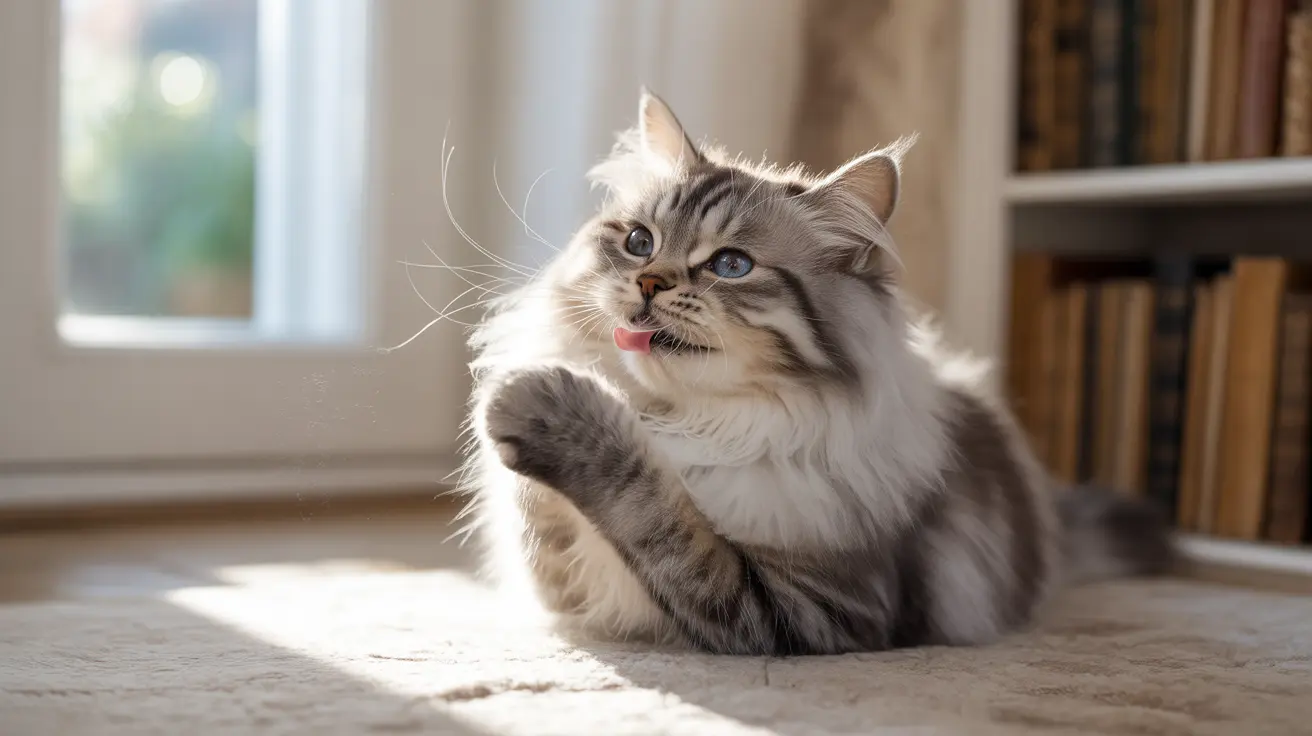If you've ever nuzzled your feline friend, you've probably noticed their nose can be surprisingly wet. This common observation leads many cat owners to wonder: why is my cat's nose wet? The answer involves a fascinating combination of biological functions, environmental factors, and sometimes health-related causes.
Understanding what's normal for your cat's nose moisture level and what might signal a problem is crucial for maintaining their health. Let's explore the various reasons behind your cat's wet nose and when you should be concerned.
The Natural Science Behind Wet Cat Noses
Cats' noses are naturally designed to maintain a certain level of moisture for several important biological reasons. The moisture comes primarily from special sweat glands located in their nasal area and helps them function more effectively in their daily activities.
The wetness serves multiple purposes in your cat's sensory system. When scent particles stick to the moist surface of their nose, cats can better detect and analyze various smells in their environment. This enhanced olfactory ability is crucial for their survival instincts and daily interactions.
Normal Causes of Nose Wetness in Cats
Natural Secretions and Grooming
Your cat's nose might be wet simply because they recently groomed themselves. Cats are meticulous groomers, and during their cleaning routine, they often lick their noses, leaving behind a temporary layer of moisture.
Environmental Factors
The environment plays a significant role in your cat's nose moisture levels. High humidity can increase nose wetness, while air conditioning might cause it to become drier. These fluctuations throughout the day are completely normal and shouldn't cause concern.
When to Be Concerned About Your Cat's Wet Nose
Abnormal Discharge
While some moisture is normal, excessive wetness or unusual discharge can indicate health issues. Watch for:
- Thick or colored discharge
- Blood-tinged moisture
- Persistent dripping
- One-sided nasal wetness
Associated Symptoms
Pay attention if your cat's wet nose is accompanied by:
- Sneezing or coughing
- Difficulty breathing
- Loss of appetite
- Lethargy or behavioral changes
- Face pawing or rubbing
Monitoring Your Cat's Nose Health
The best way to understand what's normal for your cat is to regularly observe their nose condition. Make note of their typical moisture levels and any patterns you notice throughout the day. This baseline knowledge will help you identify when something isn't quite right.
When to Contact Your Veterinarian
Seek veterinary care if you notice:
- Persistent excessive wetness
- Unusual colored discharge
- Accompanying respiratory symptoms
- Changes in eating or drinking habits
- Signs of pain or discomfort around the nose area
Frequently Asked Questions
Why is my cat's nose wet sometimes and dry at other times—what is normal?
It's perfectly normal for a cat's nose to alternate between wet and dry throughout the day. This variation can be caused by grooming, environmental conditions, and activity levels. As long as there's no unusual discharge or concerning symptoms, these changes are typically nothing to worry about.
Can a wet cat nose indicate allergies or respiratory infections?
Yes, excessive nose wetness or unusual discharge can be a sign of allergies or respiratory infections. If accompanied by sneezing, coughing, or changes in behavior, consult your veterinarian for proper diagnosis and treatment.
How can environmental factors affect the wetness of my cat's nose?
Environmental factors like humidity, temperature, and air quality can significantly impact your cat's nose moisture. High humidity typically increases wetness, while dry or air-conditioned environments may lead to drier noses.
When should I worry about persistent nasal discharge or excessive wetness in my cat's nose?
Worry if the discharge is colored, blood-tinged, or accompanied by other symptoms like sneezing, difficulty breathing, or decreased appetite. Persistent excessive wetness that's unusual for your cat should be evaluated by a veterinarian.
What home care steps should I take if my cat's nose is unusually wet or has abnormal discharge?
Gently clean any discharge with a warm, damp cloth. Monitor their breathing, eating, and behavior. Consider using a humidifier for comfort, but most importantly, consult your veterinarian if symptoms persist or worsen.
Conclusion
While a wet nose is often normal for cats, understanding the difference between healthy moisture and concerning symptoms is key to maintaining your pet's health. Regular observation and prompt attention to unusual changes will help ensure your cat stays healthy and comfortable.






